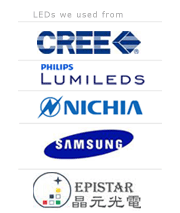News
Search
Popular search



As LED TV market penetration rates reached 95 percent in 2013, the product’s market penetration rates are close to full saturation this year. With high LED TV market penetration rates, LED-backlit TVs are close to overtaking CCFL backlight modules in 2014. In 2014, direct-lit LED TV penetration rates are expected to exceed 50 percent, and clinch the leading position from edge-lit type TVs for the first time.
Direct-lit LED TV works against the tide to gain market acceptance
Due to LED TV’s fierce price competitions, manufacturers have advanced TV technologies to lower costs that has resulted in the birth of low-priced direct-lit LED TV, these have quickly entered the mainstream LED TV market. Direct-lit LED TVs annually increasing market penetration rates can be explained by continual modifications made to the TV. Manufacturers replaced the TV’s backlight modules expensive light guide plates with reflectors, followed with the addition of secondary optic lens and higher powered LED chips to reduce LED usage. All these adjustments sufficiently brought down manufacturing costs. The only flaw was compromises were made in the machine’s thickness. Compared to the more popular and thinner edge-lit type LED, the less costly direct-lit TV nicknamed “chubby TV” was less well received. At one point in 2013, chubby TV sales were even lower than expected resulting in manufacturers more conservative approach.
Despite of this, manufacturers continued to make advancements in direct-lit type LED TV’s to develop thinner, more energy efficient and cost-effective products. Hence, those outside the industry are still optimistic about this particular TV’s market. In terms of improving TV thickness, refinements in secondary optic lenses expanded beam angle to 165 degrees, and shortened OD from 25mm to 28mm to 15mm. This led to the emergence of slimmer direct-lit type LED TVs, and took away previous edge-lit type TVs advantages in thinness. Market acceptance for direct-lit type LED TV also increased significantly after the recent upgrades.
To lower direct-lit type LED TV costs, LED chips lumens output was increased from 90 lumens to above 110 lumens. In addition, increased driver power reduced LED chip usage. Improved direct-type LED TV technology also lowered backlight costs, without sacrificing TV thickness. All these advantages spurred on market penetration rates, and gradually allowed the TV type to suppress edge-lit type TV market share.
Further cost cuts expected for direct-type LED TV
Each TV brand is expected to attempt lowering direct-type LED TV costs further, with Korean manufacturers performance under the spotlight. Samsung has played a key role in the industry many times. Since March 2013, the company has launched several direct-type LED TVs. The Korean manufacturer has not slowed down improvements made to TV thickness, lower backlight costs and others. Worth noting is Samsung, an active player in the direct-type LED TV market, has been one of the first companies to introduce flip chip LED to further lower costs; which is expected to further lower chip usage and lower overall backlight costs.
Direct-lit LED TV and edge-lit TVs competition will continue to affect the supply chain. Currently, those outside the industry have a positive outlook for the TV’s expanding penetration rate. Manufacturers investment in this LED TV type might increase under the influence of Korean manufacturers actions. Whether edge-lit LED TV market penetration rates will continue to fall will depend on future market developments.



